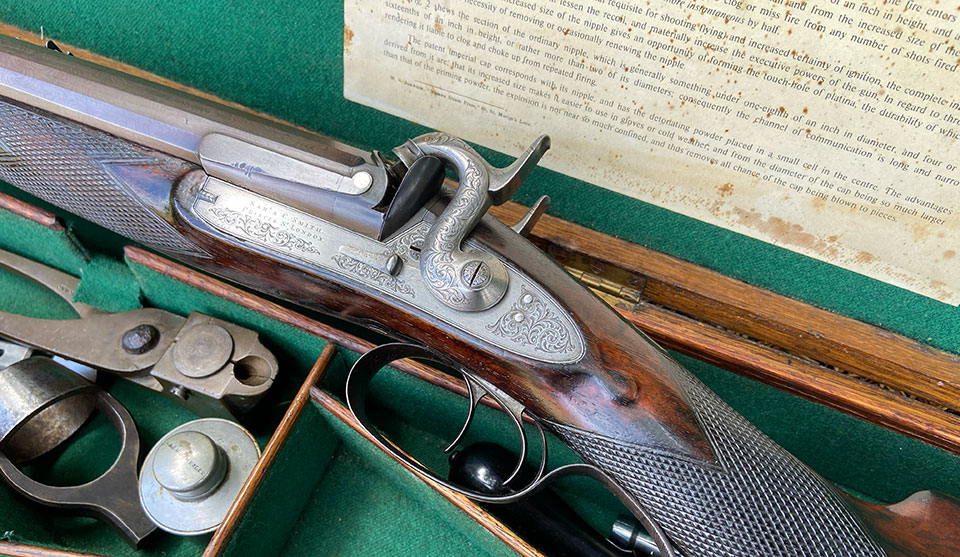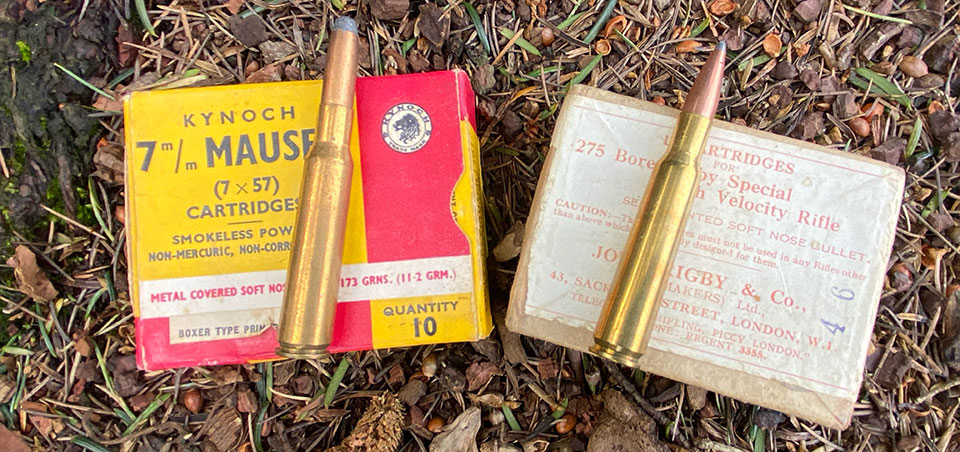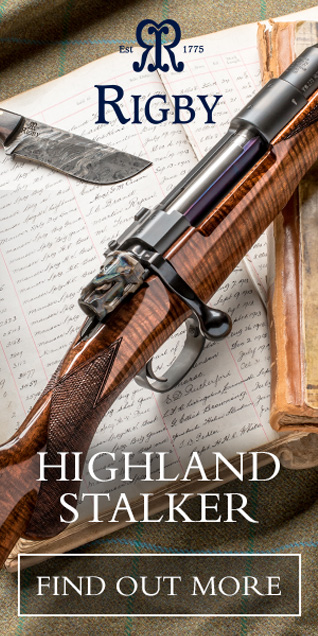The attraction of very heavy double rifle calibres has always featured in the conversations of collectors and hunters. When tackling dangerous game in situations where one’s life may literally be staked in an encounter with a big, dangerous, angry animal, the thinking goes that if big is good, bigger must be better.
Like many such feats of reasoning, it has its basis in truth. Throwing a ping-pong ball at someone’s head as hard as you can will have little effect, Throwing a cricket ball with the same amount of effort will send him to the hospital. That being true, then the same must be true of projectiles fired from rifles.

We can see that the principle does extend into the realm of firearms ballistics. Anyone doubting that might try hunting a Cape buffalo with a .22 rimfire. There is a reason nobody does that.
However, the ideal hunting cartridge and projectile choice is far more complicated than the simple principle that a big one beats a small one. Early big game hunters went through these calculations. In the days of black powder and relatively slow-velocity projectiles, hunters bought the biggest rifle they could get and fired the biggest lump of lead they could handle at the biggest African and Asian quarry, like Cape buffalo, elephant and gaur.
We still occasionally see these behemoths in gun collections and auctions, from short-barrelled four-bore muskets, like the one used by Sir Samual White Baker for elephant and rhino to the more sophisticated but still brutal double eight-bore hammer rifles which Holland & Holland made in the 1880s.
multi-shot rifles capable of much greater accuracy, longer effective range and better penetration
Cordite changed all that for a while. When it was introduced it gave rise to a revolution in thinking about calibre and quarry. The arrival of Cordite at the end of the 19th century was accompanied by the rise of the magazine rifle. Where, previously, hunters had invariably chosen a big projectile moving relatively slowly to batter their quarry at close range, they now had multi-shot rifles capable of much greater accuracy, longer effective range and better penetration due to the speed at which they propelled their bullets.

Bullet technology was quick to adapt, as soft lead would fragment or mushroom too much to penetrate thick skinned, heavily muscled animals. Harder alloys and the incorporation of metal jackets or steel or brass tips helped ensure the necessary weight retention and penetration desired to make full use of the power of Cordite.
Soon, hunters in Africa were using .303, .275, .256 and other small calibre magazine rifles to hunt all manner of dangerous game, many with very impressive results. The belief was that penetration was the key to success. A big bull elephant could take an ill-placed quarter pound ball of lead and run away but would immediately succumb to a 170-grain solid bullet in the brain or heart.

Theoretically, that is absolutely correct. However, in practice, that kind of precision is very hard to achieve without an intimate knowledge of biology and of the specific location of the vital organs of a wide variety of animals, as well as the skill, experience, and composure to place the shot into one.
The terrain, climate and unpredictability of African hunting added countless complications and the result was a lot of dead hunters who wounded dangerous animals with their little rifles and then found that they were not effective in stopping a charge.
those who believed in power and those who believed in precision
The concept of a ‘stopping rifle’ returned. More properly, we might say it endured as there had always been something of a debate between those who believed in power and those who believed in precision.
It may be possible to kill a standing buffalo at a hundred yards with a heart shot from a .303 but if it is charging you head down and you have to take the shot at ten yards, you want something much bigger. For this reason, no African country will now allow the hunting of dangerous game with a rifle calibre smaller than .375.

Given that most sport hunters in Africa now aim to get as close to their quarry as possible, a big double is again the weapon of choice for those who can afford one. But that brings us back to the age old conundrum we faced at the beginning of this article. Is bigger always better?
The question arose in my own experience when hunting with a friend from Texas. We engaged the same professional hunter in 2024 for an elephant hunt in Botswana with whom we had hunted in 2007. In the intervening years we had hunted in Tanzania and Michael had hunted in Zimbabwe. Each hunt included dangerous game (mainly Cape buffalo and elephant).

Michael had used a .470 Manton double boxlock for the first elephant hunt, a .577 double Westley Richards drop-lock for the second and a .470 Westley Richards drop-lock in Zimbabwe.
When we sat at Dallas Safari Club and discussed the upcoming elephant hunt with PH Grant, Michael wondered aloud which rifle to bring; the .577 or the .470. Somewhat to my surprise, Grant said he would prefer Michael brought the smaller option.
the .470 bullet more reliably penetrated when body shots were taken
In his experience, he explained, he found the .470 bullet more reliably penetrated when body shots were taken on elephant. Michael accepted his advice and took the .470. With it he killed a very big, old bull elephant.

I talked this through with the MD of one of our great rifle builders. He has decades of experience shooting elephant and disagreed, very much preferring the .577 and having used it successfully on numerous occasions.
The debate appears sure to continue. Those who take reassurance from raw power and those who believe in the benefits of a lighter rifle. The ballistic data might sway some but for most the decision is more personal.
The old cliche ‘use enough gun’ is certainly rooted in bitter experience but how much is ‘enough gun’. Perhaps we will never really settle on a definitive answer.
Published by Vintage Guns Ltd on




